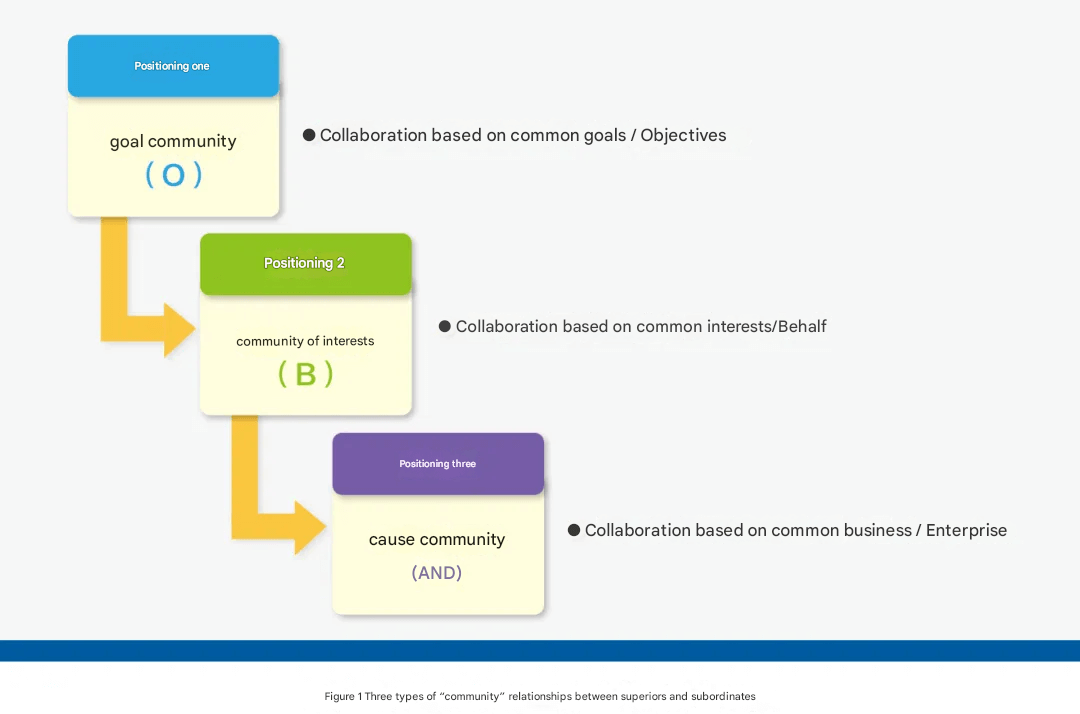The essence of management is neither coordination, nor decision-making, nor control, but service. Management serves goals and results by activating and releasing the energy and potential of elements and objects.
Drucker's view that "management is practice, management is to stimulate goodwill and potential" is the most practical and the most pleasing and wise summary. Other expressions are either partial functions or certain means and methods.
In order to make management clear, I will try to present a skeleton portrait of management characteristics in one answer based on my own experience and understanding. Mainly talk about the following 4 points:
"Six major objects and elements" of management
"Five major functions and functions" of management
"Six major supports and grippers" of management
"Four major principles and benchmarks" of management
"Six major objects and elements" of management
Management is not empty talk. In any organization, management has targets and objects. When talking about management, we generally cannot do without the six major object elements of "people, things, resources, materials, time, and efficiency". This is also the body of management, and it is also the element where management produces effects and creates value.
1. One of the objects of management: "people"
People are the primary productive force. Although organizational management is based on things first and things as the line, the ultimate support and foothold still lies in people. People are the core production resources for any organization to achieve its goals and fulfill its responsibilities, not to mention that commercial organizations based on economic interests need people to continuously create value. Regardless of the organization, the size of the team, and the number of employees, there is a problem of getting people with different styles, insights, and ideas to think and work together around the goal.
In fact, management activities and behaviors are "things are the center and people are the foothold". Management comes and goes, and it will eventually return to the fundamental object of people. In actual work, no matter where you are in the organization, you will face either "5 managements" or "3 managements": manage yourself first, then manage your superiors, then manage your peers, and finally manage outsiders (external collaborative personnel), or manage your subordinates. Grassroots and general executors are "3 managements", and those above the middle level are generally "5 managements". With the increasing development of technology today, the work scenes are becoming more and more diverse and personalized, and the self-management of employees will become more and more prominent, especially knowledge-based talents and employees.
2. The second object of management: "Things"
The goal and reality are not far apart, and there is only a distance of "things" in between. The organization is centered on "things" and uses "things" as a clue to build and generate value, realize and stabilize value. Things are the process and actions of transforming the organization's vision into goals, goals into plans, and plans into responsibilities and the implementation of work.
For operators and managers, no matter how the business philosophy is updated or how the management methods are iterated, the core of management has never changed. It has always been centered around the "things" in the supply chain of "production, supply, and sales", such as customer needs, technology research and development, product polishing, production, market, sales, after-sales, etc. Only when there is something can there be momentum, and only when there is momentum can things be accomplished. Whether it is the top-level strategy, platform, team, rules, and culture, or the middle-level planning, task division, progress control, standardization, assessment, and space expansion, or the grassroots opening arms, taking steps, starting hands, and exerting some strength, all responsibilities are behind things!
3. The third management object: "capital"
An enterprise may not die if it loses money, but it will definitely not survive without money. Cash flow is always the "blood and lifeblood" of the enterprise. If blood can flow, life will continue, and if blood does not flow, life will stop abruptly. Although funds are so important to organizations, funds are only one dimension of "capital". For operators, "capital" includes capital and assets in addition to funds. The management of "asset" is actually the management of the comprehensive utilization, efficiency and benefits of factors such as funds, capital and assets.
The core of the management of "three assets" such as funds, capital and assets is to strengthen the liquidity of funds and generate overflow value through the flow of funds. Funds cannot be turned into inefficient and useless cost assets, let alone bubbles and sunk assets. Funds and assets can only generate value if they are liquid, and value can only generate income if it increases, and income is meaningful only if it is liquid.
These will eventually be reflected in the company's financial "core three tables". Maybe you don't need or even know how to make a table, but you have to be able to read the table, especially the data and numbers in the "core three tables", because every number in the real three tables is a perspective of the results of business activities (of course, false accounts and whitewashed data are meaningless).
4. The fourth object of management: "things"
Things refer to things (plans and problems) and objects (objects, equipment, products). Things are used to assist in achieving things, and things are used to promote the development and utilization of things. Whether it is the resource integration of "creating something out of nothing" or the accumulation of strength of "self-reliance", things are one of the essential basic supports in the process of entrepreneurship and business operation.
When it comes to the "things" of an enterprise, it is inseparable from the basic objects, equipment, products, production or business sites and other resource-based things, which are the elements of the enterprise's tangible platform. How to use and utilize the elements of "things" to exert, generate energy and value requires management. The things of an enterprise are one of the objects that must be grasped and grasped by enterprise management.
5. The fifth object of management: "time"
We often say that the management is not good, but few people can explain and clarify the "why is it not good" for the poor management. In fact, in addition to the direction and strategy of the business, most of the other problems of the poor management of enterprises come from management and operation. In fact, many enterprises go bankrupt not because of problems with direction or strategy, but because of problems in management measures, time nodes, rhythm, and heat. They are exhausted, dragged to death, exhausted to death, run to death, and slow to death.
The business operation process is a process of racing against time, a process of every second. Seizing the time window is seizing the "time", seizing the opportunity and node is seizing the "turnaround", seizing the time precipitation and having a good accumulation will usher in the "explosion period"! "Time" usually refers to time and space, opportunity, duration, rhythm, and is also one of the main dimensions of heat and scale. The management and control of "time" is a huge test and challenge for operators and managers.
The management of "time" will be transformed into goal management, plan management, time management, result management, etc.
6. The sixth object of management: "Effect"
Efficiency is the premise and foundation of benefit. Only with efficiency can there be benefit, and only when benefit is generated can there be profit. The root of the enterprise is profit, with efficiency as the premise and benefit profit as the purpose. In order to achieve the fundamental "profit", the enterprise needs to integrate, develop, and use various strategies and means such as management activities to make people, things, materials, resources, time, etc. play and generate the greatest value to ensure efficiency improvement.
Whether the value of entrepreneurship and enterprises can be maximized depends on the three indicators of efficiency, effect and benefit to measure and support. This is the starting point and foothold pursued by managers. Whether it is managing people and doing things, or taking advantage of the situation and using things, it is expected to achieve the purpose and goals of individuals and organizations through "efficiency, effect and benefit included in effect". Without "effect" as support and guarantee, everything is a castle in the air.
To ensure the effect, action management, process management and other operational guarantees are needed. Operation is the process of blending strategy. It is neither the maintenance and maintenance of traditional concepts, nor the market promotion mentioned by Internet companies today. Operation includes action, execution, implementation and other behavioral processes.
The "five functions and functions" of management
There is no doubt that management serves operations and is responsible for the results of operations. Therefore, management must bear its own functions and must have its own functions. The five points of goals and plans, organization and implementation, command and coordination, supervision and inspection, evaluation and optimization are the core functions of management. These five functions are equivalent to the engine of a car, which needs it to provide power for driving.
1. Goals and plans
To run a business is to run vision and goals. Vision is the general direction of the enterprise's progress, and goals are the beacons on the road ahead. Through the navigation of stage-by-stage goals, we will eventually reach the destination of the vision. Vision is just an idea and proposition, and goals are coordinates and indicators. Only when the goals are achieved can the vision be achieved. As mentioned earlier, management serves goals and results. Goals themselves will not produce any value. Its value must be converted into results through specific action plans. On the surface, it is said that the management of results and processes is actually the expectation of gradually reaching the goal through positive feedback from effective processes and gratifying results.
To achieve the goal, it is absolutely impossible without a plan that can be implemented and executed. The goal is to transform the vision into a concrete anchor point, and the plan is to turn the goal into an implementation plan that can be implemented. In business operations, goals come first and plans come later. Operations set goals, management makes plans, operations command management, and management corrects operations. The two are inseparable! Planning is one of the basic grasps of management work, and it is also one of the structures and functions of management.
2. Organization and implementation
Organization generally includes two aspects: hard organization and soft organization. Hard organization refers to the constituent institutions and system departments of an enterprise, while soft organization refers to the processes, rules, systems, cultural values, etc. of an enterprise. To exert the functions of an organization, it is necessary to build corresponding institutions and forms, determine the path and procedures of the organization, and ensure the cooperation and operation of the organization. Although the sparrow is small, it has all the internal organs. One of the core missions and responsibilities of the operator is to build and shape the organization (determine the direction, build a platform, and build a team).
If an organization wants to achieve its purpose and realize the established goals, it can only rely on one word-"do". In other words, it relies on the soft organizational power of organization implementation to blend and rely on specific operational means and actions to realize.
If the business operation is to look at problems and think about problems, it is the process of "peeling onions": sort out and clarify the intertwined and replicated series of phenomena and problems, and finally see the overall and penetrating phenomena, and grasp the essence and core.
Then, the organization implementation is the process of "making dumplings": through a series of materials, distinguishing the order, finding the steps and procedures, and finally forming the complexity of the system through the simplicity at one point. In a word, all business intentions and propositions, goals and plans must be implemented through specific actions. Only actions can blend or transform strategies, tactics, ideas, plans, programs and methods into results.
3. Command and coordination
In management activities, the meaning of command is not as simple as our conventional understanding of moving our mouths and waving our hands to let others do things and work, but to give people directions, instruct decisions, guide work and point out problems. Among the six major management objects of "people, things, resources, things, time and efficiency", people are the only production resources with initiative and initiative. The following five objects are all controlled by people because people have their own thinking, cognition, views, ideas and propositions, and there are thousands of people with thousands of faces. Therefore, commanding, controlling, coordinating and guiding people is the most difficult.
The reason why coordination is important is that every enterprise organization must have two chains: the enterprise supply chain and the enterprise work chain. These two chains require that the endpoints of each link in the chain are linked and coordinated with each other to maintain normal operation. In order to activate people inside and outside the organization to serve the goal, in addition to relying on traditional power and interests, it is necessary to coordinate the relationship and resources between people to produce the effect of synergy and collaboration.
The most important means of coordination is to communicate, communicate, and communicate again on the premise of respect. This is just as Kazuo Inamori said, "Enterprise management was communication in the past, communication now, and communication in the future." In fact, only good communication can bring good coordination effects.
4. Supervision and inspection
Power without supervision will become a "private tool" due to loss of control, and actions without constraints will be unbridled and evolve into inaction or chaos. If you want to use power where it should be used and let the action move forward in the set direction, supervision is indispensable. Supervision is not a simple finger-pointing, nor is it to tie the hands and feet of the supervised object, but to predict the implementation of the plan and the advancement of work by bowing down and arriving at the scene, discovering problems, solving problems, and actively providing corresponding assistance. It is the responsibility of managers to perform management roles and shirk their responsibilities by ensuring that the team and organization execute and implement according to the established and preset directions, goals, and plans through supervision.
In management activities, if supervision is to ensure the progress of plan implementation, then inspection is to ensure the quality of the implementation process and the expected results. Inspection is to predict trends, find problems, and solve problems. The core of supervision and inspection in management is to grasp and grasp: indicators, processes, deviation correction, correction, assistance, and optimization. The core purpose of supervision is to predict problems, find problems, and solve problems to ensure the progress and effectiveness of work.
5. Evaluation and optimization
Evaluation is to judge, analyze, and evaluate the implementation process and results based on goals, indicators, parameters, processes, etc., summarize deficiencies, find advantages, and make adjustments and corrections. The three steps of pre-analysis and prediction, in-process review and correction, and post-review and summary are the core steps of work planning and execution, and are also the core links of the work closed loop. Whether management is effective or not, one of the important dimensions is whether a closed loop can be formed. Evaluation is an important link in the management closed loop and cannot be missing. If it is missing, it will fall off the chain.
Pre-judgment and analysis of work processes, standards, steps, methods, personnel, resources, etc. according to the development needs and possible problems at different stages, and then strive to find the best solution and response plan. Drucker said "management is practice", which actually means that the best management is to find targeted and effective solutions in practice according to the business content and conditions such as its own vision, goals, actual conditions, and stage work.
Enterprise operation is a dynamic and developing process of constantly facing and solving problems. This determines that the ideas, methods, and tools of management must be combined with the dynamic development and environment of things, and optimization is to effectively match and improve the dynamic environment. This is an indispensable link and action. Enterprise operation, through management in the development movement, review and optimization in practice, and improvement in optimization, thus promoting the sustainable development of enterprises (dynamic cycle process of Deming circle).
"Six major supports and grasps" of management
Although management is not easy, it is not so mysterious. It has its own context. Grasping these contexts and supports will build a management framework. Mechanisms, processes, systems, standards, methods, and tools are not only the six major supports for management activities, but also the six major grasps for the implementation and development of management activities.
1. Mechanism
Mechanism refers to the relationship and function of the interconnection and interaction between the constituent elements in an enterprise. The mechanism is composed of elements such as value chain, process, organization, capability, control mode, incentive and evaluation, and needs the three carriages of "system, guarantee and incentive" to escort. Managing an enterprise requires building and creating some effective mechanisms that are suitable for the enterprise, department, team, innovation and creation.
For example, the team and employee management mechanism: the mechanism of identifying and selecting people, the mechanism of employing and educating people, the mechanism of assessment and reward, incentive mechanism, and the mechanism of eliminating the superior and inferior; another example is the management mechanism of the founding partner or investor: such as the mechanism of entry and exit, the mechanism of collaboration and coordination, the distribution and handling of rights and responsibilities, etc.
2. Process
The process is a concise setting and overview of the path, procedure, and steps of doing things, which is generally expressed in graphics, also known as a flowchart. The process and flowchart are intended to simply and clearly inform the executor of the general implementation path, the steps and sequence to be taken, the people or departments to coordinate and cooperate, who makes the decision, who to ask for instructions, etc. The process is one of the manifestations of the standard, and it is also one of the tools and means to ensure the order of organizational operation and improve work efficiency. The core purpose of the management process is to improve the efficiency of work collaboration and coordination and achieve the ideal output effect on the basis of division of labor, division of responsibilities, and division of power.
One of the key points of enterprise management is to ensure the efficient and high-quality operation of various organizational tasks and achieve the best work results by designing and setting the optimal (relatively simple, very effective, and replicable) paths, steps, and procedures for the work, connection, cooperation, and coordination of different systems, departments, and positions.
3. System
Rules and regulations generally refer to various regulations on people and things in all aspects of enterprise management and operation, including enterprise administrative office, material supply and procurement, human resources, finance and investment, market and sales, production planning and organization, product quality assurance and inspection, inventory and statistics of warehouse products in and out, logistics and distribution, pre-sales, in-sales and after-sales services, various complaints and crisis response and handling, internal organizational system remote transfer process, coordination, collaboration, cooperation contracts and agreements.
The basic contents of the regulations include general rules, detailed rules, processes, methods, responsibilities and powers, execution time, supplementary explanations, etc. The systematicness and perfection of the regulations are related to the size and category of the enterprise. For example, the different talent composition of production-oriented enterprises and Internet technology-oriented enterprises determined by the nature of business and product characteristics will inevitably affect the setting of rules and regulations.
Enterprise management should carry out targeted, applicable and matching, and appropriately forward-looking system construction according to the actual situation and resource situation of its own enterprise. Generally speaking, the larger the scale of the enterprise, the more perfect the organizational structure, and the more people in the team, the more complete the classification of the regulations and the more systems there are.
4. Standards
Standardized management, management standardization and refinement are eternal topics in the business world and the goals pursued by management. Although standardization and refinement are important, they are not necessarily suitable for every enterprise (depending on the industry, stage, and scale). The basic standard of not seeking advancement but seeking effectiveness and efficiency is an indispensable action guide and result measurement indicator for every leader and manager.
The standard is to achieve the achievement of various expenditure and output figures and data through clear action processes and paths after decomposing the business goals. To manage the enterprise well, it is necessary to establish relatively clear action guidelines and processes for the people, things, materials, resources, time and other objects of the business activities according to their own current situation, stage, resources and conditions, and establish clear and specific expected indicators and parameters.
5. Methods
The method is a means to achieve a certain purpose or obtain a certain result. Enterprise management is to solve and resolve various tasks, problems, and contradictions in the business activities of the enterprise through targeted means. For example, brainstorming, SWOT, PDCA, JIT, KPI, OKR, 6W4H, SMART and other thinking models and concept methods.
Management of enterprises will eventually achieve the purpose of the enterprise through various specific means, drive and drive the enterprise to embark on a healthy and high-speed development path, and achieve various expected operating indicators of the enterprise from stage to long-term. Leaders and managers must find or master some specific and effective management methods and means involving all levels of the enterprise to manage the enterprise well.
6. Tools
All kinds of platforms, facilities, equipment, and props required for guaranteeing and maintaining normal production, life, team building, marketing publicity and promotion, terminal activity display and display, customer service, internal and external information transmission and communication; various charts that indicate the principles, paths, procedures, steps, statistics, and summaries of corporate values, culture, vision, and work execution; various office and management hardware and software that improve work efficiency and synergy.
"Four Principles and Benchmarks" of Management
There are "five days" in the military formation chapter of Sun Tzu's Art of War, namely: "one day, two days, three days, four days, five days, and five days". The simple explanation is that the control and grasp of factors such as degree, number, quantity, and weighing will determine the final victory on the battlefield. If management is not easy, the most difficult part is to control the measurement, timing, rhythm, degree and other aspects of management. Cost, matching, efficiency, measurement and other factors are the four basic principles that ultimately determine the effectiveness of management.
1. Cost benchmark
Management can bring benefits, but it also requires costs and can create costs. Management itself is a double-edged sword. If used well, it can revitalize the enterprise, but if used poorly, it will lead the enterprise to decline. Effective management is to activate, integrate and stimulate various production and operation factors on the basis of reducing various costs to achieve direct and indirect spillover benefits and benefits.
Cost is dynamic and has two sides. In fact, management brings benefits to management, which means that management should reduce dead costs and tap into live costs. Both hands should be grasped and both hands should be strong.
In actual operations, many costs are actually the source of profits and can create profits. For example, labor costs, procurement costs, capital payments, etc. are all active and can directly create more real profits under reverse thinking and scale (famous reverse cost thinking case: Southwest Airlines responds to crises through human capital activation). Cost and cost theory are a concept that operators or managers must have when performing management roles and functions. They must accurately grasp and control management costs and do a good job in controlling the dimensions and scales of cost management.
2. Efficiency benchmark
The Internet industry advocates "small steps and fast running, continuous iteration", which is actually about the efficiency of action and work. Efficiency is one of the main indicator dimensions for measuring the level of business management of an enterprise, and it is also the premise and basis for achieving benefits. Without efficiency, there will be no good benefits. To achieve benefits from management, we must first grasp efficiency from management.
If managers want to grasp efficiency, they must improve, strengthen, and enhance the speed of operation and turnover of management objects - people, things, materials, and resources in unit time, the frequency of use and transactions, and the intensity of output and flow. Efficiency must be grasped: speed, frequency, and effect.
3. Matching benchmark
"Tailoring clothes to your body" is familiar to everyone. This idiom tells us to do things according to our own state, conditions, and reality. Only clothes made according to our personal body shape and size are suitable for us, and only clothes that suit us are the most suitable. This is even more true for management. You can learn from others' effective management models and methods, but you cannot copy them. After all, the development stages, environments, organizational scales, cultural values, and other aspects are different. If you "copy the gourd" without absorbing and digesting them, the results will often not be very good.
Therefore, whether it is the ideas and concepts of management, or the models and methods of management, the best ones are the ones that suit you. To be suitable for yourself, you need to grasp the "matching" criteria of management: targeted, effective, staged, and developmental.
4. Metrics
"The high platform starts with the pile of soil", but the pile of soil will have different effects and results due to different materials and strengths. Just like the pile of soil on the high platform, let's not talk about whether the methods, tools, and models are different. Even if the same tools and methods are used, the results will be completely different due to differences in strength and amplitude.
Although scale and degree are "dilemmas" that always exist and must be faced in management, not being afraid of difficulties and not avoiding problems is the spirit and quality of operators and managers. If managers want to move forward and promote the development of enterprises, they must use their wisdom to combine their own conditions and characteristics, and then compare the two to choose the lighter, the more profitable, and the more useful. The scale and degree of management are generally manifested in the dimensions of coarseness and fineness, width and length, strictness and looseness, more and less, big and small, high and low. It does require wisdom, feeling and level to grasp the measurement in business management.
In summary, the essence remains unchanged. Regarding the comprehensive knowledge of management, whether it is studying management or actually doing management, grasping the management characteristics is like grasping the seven inches and holding the bull's nose. Management is really magical. Effective management can create value and profit, while improper management will create costs and losses. In management, we must not blindly pursue the advancement and standardization of models and tools, but should pay more attention to pertinence, applicability and effectiveness.







